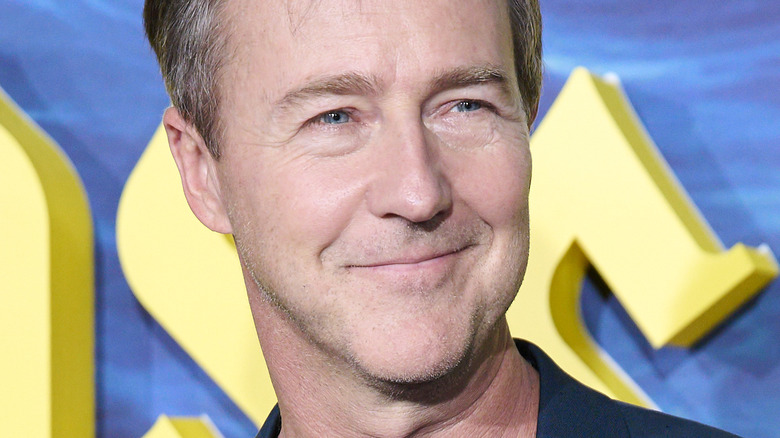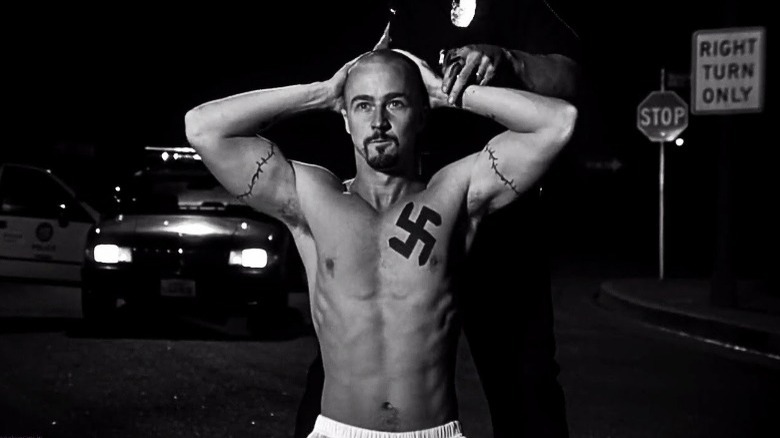American History X's Scriptwriter Knew The Film Would Have Lasting Impact After Witnessing One Spine-Tingling Moment
Several noteworthy titles made it to the big screen in 1998, though few — if any at all — proved as emotionally poignant as director Tony Kaye's "American History X." The film follows siblings Derek (Edward Norton) and Danny Vinyard (Edward Furlong), who offer audiences a horrifically candid look at white supremacist and Neo-Nazi cultures that fester in American society. Derek eventually sees the error of his ways to an extent and attempts to redeem himself. Meanwhile, Danny falls deeper and deeper into these hateful ideologies, which ultimately leads to his undoing.
Given the serious subject matter, the host of harrowing performances, and the disheartening family drama at the core of it all, "American History X" has become a cinematic classic in the years since its premiere. Sure, making the film itself may have been a bit rough — especially for Norton, who was never the same after starring in the film — but at the end of the day, all of the trials and tribulations were worth it. It turned out to be a solid directorial debut for Kaye that made audiences think critically about real-world topics that most other Hollywood productions wouldn't address in such a raw fashion.
Of course, none of this success came as a shock to "American History X" scriptwriter David McKenna, who knew the film would find a place in the history books as soon as he saw this one graphic scene.
Reactions to the curb scene indicated to McKenna that American History X had staying power
Among the most talked-about moments from "American History X" is the infamous curb scene. It sees Derek Vinyard — having not yet gone to prison and tried to change his ways — use a curb to brutally kill a man named Lawrence (Antonio David Lyons), who had attempted to steal his truck. In an interview with The Enthusiast, David McKenna noted how this moment solidified his belief that the film would stick around for years to come. "Every single person in the theater jumped out of his seat at the same time. I knew that this movie would have some lasting power," McKenna said.
One of the most unsettling elements of "American History X," aside from the graphic violence, is the fact that it's not entirely fictional. Neo-Nazis, white supremacists, and racists are all too real, and when writing the screenplay, McKenna took full advantage of that sad truth. "I had sort of observed these guys from a distance for a while," he told Forenseek, adding that when he and Tony Kaye attended a party one evening, he took his research to a frightening new level. "For a half hour, I talked to a guy with an M-16 tattooed to the side of his head. It was pretty intimidating, if not terrifying," he recalls.
"American History X" will go down in cinema history as one of the most uncomfortable yet important films to come out of the 20th century. Of course, if you've never seen it and you plan to check it out, don't expect a light, breezy watch.

